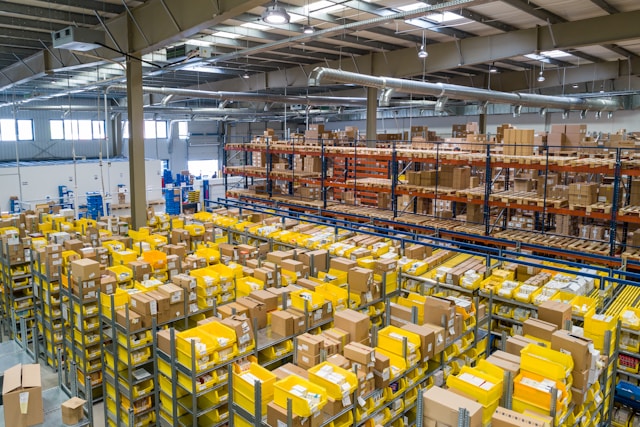The revolution of SmartMIMO technology, the AMA application case
The results all favor Kymata. A year after the launch of the new Wi-Fi solution for large warehouses and industrial production areas, those who have already tested it are speaking out. The benefits are not only greater reliability and reduced maintenance costs but also the certainty of being ready for the future needs of increasingly connected logistics and production.
Reggio Emilia – It’s been just a year since Kymata, a company under Guglielmo specialized in Wi-Fi products for the industrial and logistics sector, introduced SmartMIMO: the innovative patented technology of Distributed Antenna Systems (DAS) developed to solve network connection issues within large industrial and logistics spaces.
“For several years, we had already identified some limitations in the performance of Wi-Fi communications with Single-Input, Single-Output (SISO) technology within large intensive warehouses and industrial production areas. So, we wondered how we could leverage the distributed radiation characteristics of our antennas, and thus we developed a specific circuit that allowed us to achieve exceptional performance“, stated Miki Ferrari, CTO of Kymata.
Compared to the more traditional MIMO (Multiple-Input, Multiple-Output) technology for network infrastructures, which relies on the simultaneous use of multiple antennas to transmit and receive data, Kymata’s SmartMIMO technology solves an old issue. “Due to the inevitable obstacles, reflections, and shadow zones characteristic of industrial environments, MIMO technology encounters difficulties in operating at maximum capacity at reasonable costs, consistently resulting in uneconomical situations or disappointing performance. With SmartMIMO, on the other hand, we are able to use just one antenna, reducing implementation and management costs, as well as improving the overall reliability of the network.”
Compared to the more traditional MIMO (Multiple-Input, Multiple-Output) technology for network infrastructures, which relies on the simultaneous use of multiple antennas to transmit and receive data, Kymata’s SmartMIMO technology solves an old issue. “Due to the inevitable obstacles, reflections, and shadow zones characteristic of industrial environments, MIMO technology encounters difficulties in operating at maximum capacity at reasonable costs, consistently resulting in uneconomical situations or disappointing performance. With SmartMIMO, on the other hand, we are able to use just one antenna, reducing implementation and management costs, as well as improving the overall reliability of the network.”
A leap forward of 12 months, and it’s already time to take stock, thanks to the initial field tests in the logistics sector. Enrico Cavallini, IT Operations Manager of A.M.A., a company specialized in the production of components for agricultural machinery with clients in 90 countries worldwide and 19 production sites, speaks: “The preliminary results of SmartMIMO technology in our warehouses are extremely promising. We have observed a significant improvement in the performance of our Wi-Fi network, both in terms of bandwidth capacity and signal stability. During the use of mobile devices such as forklifts, autonomous vehicles, and handheld devices, we have particularly noticed a significant increase in data transmission speed and smoother logistics operations. In addition, the Wi-Fi signal’s physical coverage monitoring system has proven valuable in quickly identifying any anomalies in coverage and adopting immediate corrective measures. This is an incredible advantage that no other networking system is currently able to offer.”
Before the introduction of Kymata technology, Cavallini encountered serious problems related to Wi-Fi connectivity within the warehouses, with a significant negative impact on operational efficiency, especially during roaming. The goal was to provide stable and homogeneous coverage throughout the spaces. The choice was then perfected with the introduction of Kymata’s SmartMIMO, as it represented the ideal solution to address such specific technical challenges.
For entrepreneurs, it’s important to underline that the reason behind this strong growth in DAS products on the market, estimated by TechSci Research to be 10% higher this year compared to the previous 2023, is not only due to the need to solve existing problems. This is reiterated by the Operation Manager of A.M.A., who adds: “Looking to the future, we realize that the introduction of more advanced logistics automation and the adoption of emerging technologies such as robotics and augmented reality goggles could significantly increase the demand for bandwidth and transmission capacity. For the sustainability of our business in the coming years, it’s important to assess the potential of new technologies like SmartMIMO to be able to address future challenges and ensure that our Wi-Fi infrastructure is ready to support the growing needs of our operations.“

